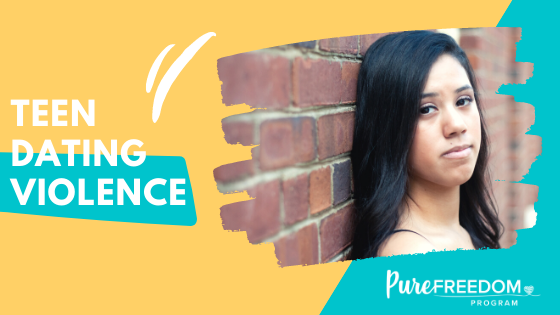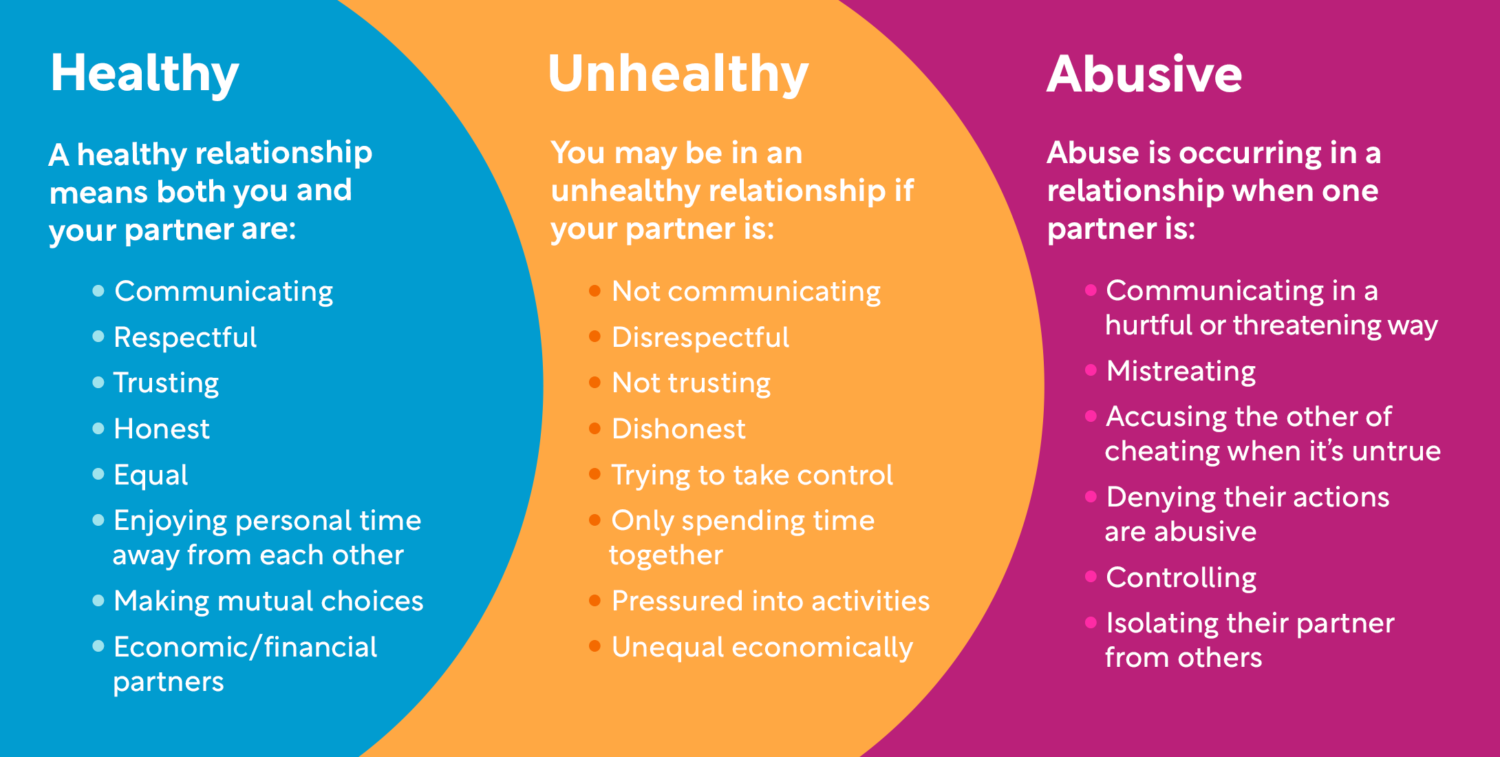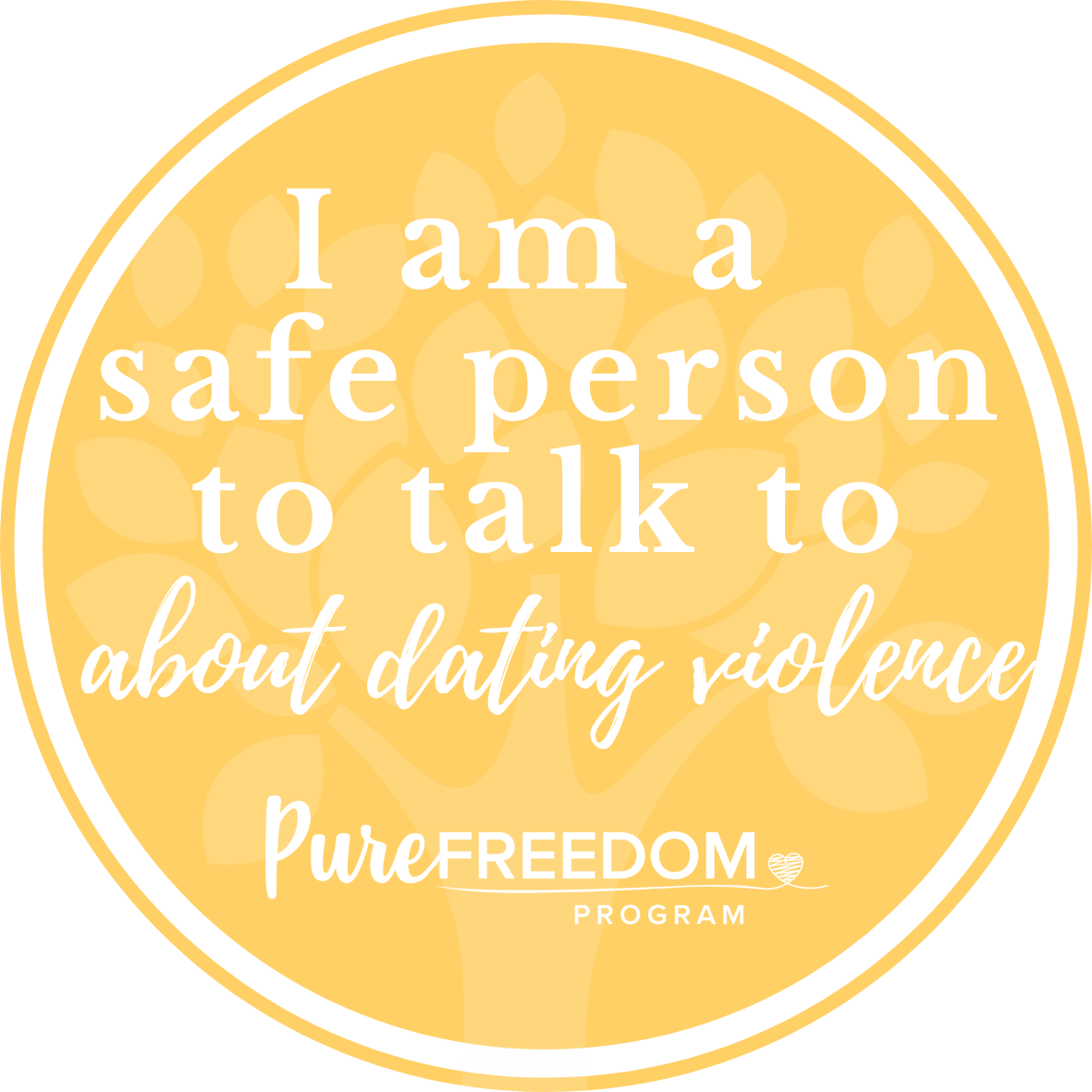16 Feb, 2021

February is Teen Dating Violence Awareness Month, and this year’s theme is “Know Your Worth”. As a holistic health education program, Pure Freedom values youth’s safety and well-being above all. Therefore, in this post, we are going back to what teen dating violence is, what it looks like, and how as parents or educators we can help prevent it from happening.
Understanding the context:
First and foremost, it’s interesting to consider how our culture presents love to teenagers. From movies and book series such as Fifty Shades or After, they learn that love equals passionate romance. And that passion can be impetuous, violent, even deceptive, as we see in the TV show Gossip Girl, in which one of the male characters pretends to be someone else to sleep with a lead female character. Emotions are on fire, and the end justifies the means.
Unfortunately, in this context where the lines between healthy and unhealthy relationships are blurred, teen dating violence is a very prevalent phenomenon.
According to statistics:
- Teen dating violence is the most common form of youth violence,
- About 1.5 million American homeschoolers admit to having been physically harmed by a romantic partner,
- 33% of American teenagers experience sexual, physical, verbal, or emotional dating abuse
- Only about a third of the teens involved in an abusive relationship seek help by speaking up about the violence.
What is teen dating violence?
But what is considered teen dating violence exactly? It can consist of physical, emotional, and sexual abuse. Examples include:
- Pinching, kicking, hitting,
- Threatening, manipulating, shaming,
- Stalking,
- Forcing sexual acts,
- Isolating.
The bottom line is that it can take so many different forms and that some of them might be more difficult to notice than others, both from the internal point of view of the teen being abused and from the external perspective of the parent or educator.
Note that because most teenagers don’t have their own house, teen dating violence may occur in various exterior settings, including “a hotel, in the car, at a dance club, and in a public business”, as well as in school.
And as a result of this kind of abuse, teenagers may experience difficulties related to academic performance, mental health and self-confidence, trust issues, alcohol and drug abuse, and so on. Overall it’s their entire future that may become affected, which is something Pure Freedom strives to fight against by equipping youth to not only recognize dating abuse but also to prevent it before it starts.
What are the risk factors of teen dating violence?
“The Family Journal: Counseling and Therapy for Couples and Families” highlights four specific risk factors associated with teen dating violence. These are:
- The fact that teenagers don’t have as much experience as adults with dating. Therefore, they may not recognize the signs of violence as quickly as their older counterparts.
- The norms that exist at school may delay or prevent them from speaking up. Indeed, a teenager who faces dating abuse might not want to appear as a victim and as a result, might keep it secret.
- Technology and its role in giving abusers another platform for abuse.
- The fact that “80% of parents of teens either do not believe that TDV is an issue that teens face or they do not know whether it is an issue for teens”.
This all may seem overwhelming, but the good news is that together, we can take action towards reducing teen dating violence. Whether you are a parent or a school professional, you do have options in your toolkit.
How to fight against teen dating violence?
The mechanisms of teen dating abuse are not infallible, and there are several steps you can take right now to counter them:
- Teach youth about healthy and unhealthy relationships. When it comes to dating, it’s important for them to have a solid frame they can refer to. Talk to them about trust, respect, healthy communication, and boundaries. The Love is Respect project also has a “Relationships Spectrum” diagram on their website that may be useful. Raise their awareness of the signs of unhealthy relationships.
- Because a picture is worth a thousand words, provide a picture for youth of what healthy relationships look like in real life. Be a model of a healthy couple in your own house, knowing that teenagers who grow up in dysfunctional families are more likely to fall prey to dating abuse.
- Show love and respect daily to the youth you get to interact with, whether they are your children or your students. Just as the point above, showing youth that they have infinite value and are worthy of love and respect goes a long way in helping them build the self-confidence necessary to demand that same treatment from romantic partners.
- Don’t minimize the severity of teen dating violence and don’t assume that abuse rarely happens. Instead, know the signs of it in order to be able to spot them on directly.
- Be a safe adult to talk to. Make teenagers know that they can talk to you if they need help, and if a teenager opens up to you about what they are going through, make sure to listen carefully and to withhold judgment. Pure Freedom has created this logo that you may print and display in your classroom to inform your students that you are a safe person.
- Register to Pure Freedom’s webinars and workshops to receive more useful information and resources on the subject.
- Invite Pure Freedom to your school or youth group to teach its sexual risk avoidance & relationship education program, which includes teen dating violence prevention.
Because knowledge is power, Pure Freedom seeks to empower youth to live a happy and healthy life, free from abuse. You can learn more about our approach here: Pure Freedom’s approach.
Let’s build a better future for our youth together.
Written by Elodie Takamiya.
Sources:
https://www.loveisrespect.org/wp-content/uploads/media/sites/3/2021/01/TDVAM-2021-Action-Guide.pdf
https://purefreedomprogram.org/what-is-love/
https://www.dosomething.org/us/facts/11-facts-about-teen-dating-violence
https://youth.gov/youth-topics/teen-dating-violence
Murray, Christine E., Kelly King, and Allison Crowe. “Understanding and Addressing Teen Dating Violence.” The Family Journal: Counseling and Therapy for Couples and Families 24.1 (2016): 52-59.
https://www.psychologytoday.com/us/blog/friendship-20/201812/what-does-healthy-relationship-look
https://www.loveisrespect.org/healthy-relationships/relationship-spectrum/
https://www.loveisrespect.org/wp-content/uploads/media/sites/3/2021/01/TDVAM-2021-Action-Guide.pdf
More information on teen dating violence:
https://socialworklicensemap.com/blog/emotional-abuse-teen-relationships/

